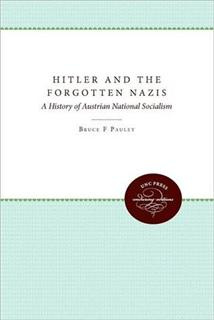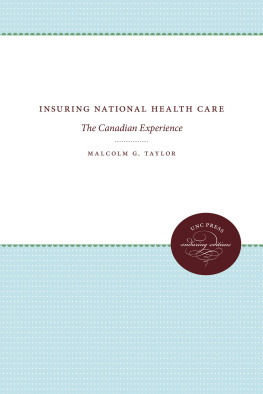CHAPTER II NAZIS AND PROTO-NAZIS: FROM EMPIRE TO REPUBLIC
Austrian National Socialism, like the Anschluss movement, had roots that were well established before the First World War. Although the origins of any ideology are notoriously difficult to trace, it would be reasonably safe to say that there were three major ingredients of Austrian Nazism: political anti-Semitism, pan-Germanism, and the clash between the rising national aspirations of the long-submerged Czechs of Moravia, especially Bohemia, and the desire of the German-speaking inhabitants of those crown-lands to preserve their superior economic and political position. A similar, though somewhat less intense, conflict occurred in Styria and Carinthia between the German- and Slovene-speaking inhabitants of those crownlands.
Austrian Anti-Semitism
Although religious anti-Judaism in Austria dates back to the Middle Ages, modem racial anti-Semitism has its Austrian origins in the emancipation of the Jews, completed in 1867,1 and the Industrial Revolution, which followed. These phenomena were accompanied by a rapid migration of Jews from the monarchys eastern provinces and the Russian Empire to Vienna. Whereas the capital city counted only 6,217 Jews out of a total population of 476,220 in 1857, by 1910 the comparative figures were 175,294 and 2,031,420. Thirteen years later, following a mass immigration of war refugees, the citys Jewish population reached 201,510 or 10.8 percent of the total population of 1,865,780. The Austrian capital now had the third largest Jewish population of any city in Europe.3 Outside Vienna, however, the Jewish population was minuscule, amounting to well under 20,000 after the war. Thus, Austrias Jewish population in the 1920s was only 3 percent of the
Nazis and Proto-Nazis - 17
countrys total.4 But this did not prevent a virulent brand of anti-Semitism from existing in the provinces.
Emancipation and migration to the big cities of the Empire were accompanied by a remarkably rapid increase in Jewish involvement in higher education. By 1914, 27.5 percent of the students at the University of Vienna were of Jewish extraction, more than th/ee times their proportion of the citys population. Almost 35 percent of the students at the citys elite secondary schools, the Gymnasia, were also Jewish in 1913. On the other hand, the fact that Jewish enrollment was low, only 2.95 percent, at Viennas School of Agriculture (Hochschule fur Bodenkultur) in 1910, was seen by anti-Semites as proof that Jews were averse to dirt and manual labor.5
Austrian Jews used their newly acquired advanced education to enter the so-called free professions in large numbers. Whereas there were only 33 Jewish lawyers in Vienna in 1869, there were 394 of them in 1893 out of a total of 683. In the latter year, 48 percent of the medical students in Vienna were Jewish.6 A large minority of the citys university instructors were also Jewish. An English author estimated in 1913 that no fewer than 75 percent of the Viennese journalists were Jewish.7 The editors of Socialist newspapers were nearly all Jewish. Hence, there was some truth in the Nazis description of the Viennese press as being Jewish. Yet the charge overlooked the fact that Jewish journalists, like other Jews, were hardly monolithic in their political views. Some even wrote for newspapers that were notoriously anti-Semitic.8 Austrian anti-Semites also ignored the fact that Jews made up hardly more than one-fourth of 1 percent of postwar Austrias civil service.
The coming of the Industrial Revolution to Austria was to a large extent a Jewish enterprise. Most of the countrys bankers and many of its industrialists (especially in textiles, paper milling, and coal mining) were Jewish.9 To a skilled artisan, the big industrialist with mass production seemed like a threat to his very existence. The same feeling prevailed among lower-middle-class merchants toward wealthy department-store owners. Even the poor Jewish peddler, though scarcely a product of the Industrial Revolution, was viewed by gentile businessmen as an unfair competitor. Certain trades, like furniture retailing and advertising, were 85 to 90 percent in Jewish hands by the eve of the World War.10 To all who suffered from the inroads of capitalism it was tempting to believe that capitalism was nothing more than a Jewish invention.
The cultural and economic prominence of Austro-Hungarian Jews made anti-Semitism even more virulent in the Dual Monarchy than in Germany. And nowhere was the strength of anti-Semitism more apparent than in the Austrian universities. Indeed, it was the Austrian universities that helped to make anti-Semitism respectable throughout the country.11
*
Georg von Schdnerer and Austrian Pan-Germanism
/
Students at the universities of Vienna and Graz were among the first Austrians to adopt both racial anti-Semitism and pan-Germanism as the bases for a modem rightist movement fanatically opposed to liberalism and laissez faire capitalism. After 1859 nationalistic social fraternities called Burschenschaften began to spread from Germany into Austria to form the earliest focal points of pan-German activity. Pan-Germanism no doubt seemed relevant to the German-speaking students at these institutions, because tkeir schools registered thousands of Slavic- and Italian-speaking students from the monarchys crownlands. So zealous were these young hotheads that when they could not convert fellow students to their ideal of an all-German Reich dominated by Prussia, they used less peaceful means to try to destroy all other student organizations. Their trademark was the saber scar. Vienna and Graz were the earliest and always remained the chief centers of pan-Germanism.12 At the heart of the students political ideology was the assumption that German national unity was of supreme importance in every political question. After Austrias defeat by Prussia in 1866, and Prussias victory over France in 1870, it became clear that German unity could best be achieved by Bismarcks new Reich. What now stood in the way of this goal was the existence of Imperial Austria. All political activity therefore was directed toward Austrias destruction. The pan-German students developed a veritable cult of Prussia, which led to speeches and pamphlets in the 1870s glorifying service to the German state. They worshiped force, had contempt for humanitarian law and justice, and criticized parliamentary government and capitalism as selfish, individualistic, and antinational. In keeping with their idolization of all things German, the pan-German students also sought to purify university life by eliminating all foreign influence, which in practice often meant the expulsion of religious and ethnic Jews, as well as Slavs, from their nationalistic societies.
About 1876, contact was made between the pan-German fraternities of Vienna and Georg Ritter von Schdnerer (1842-1921), at that time a left-wing Liberal deputy in the Austrian Parliament. Schdnerer, who in many respects might be called the father, or at least the grandfather, of National Socialism, was already well-known in Austria for his bellicose German nationalism and soon made a powerful impact on the pan-German students. He taught them the importance of the social question for the political struggle and revealed how they could persuade the masses to defend German culture.13
The spiritual leader of the German national movement in Austria since the time of his election to the Lower House of Parliament in 1873, Schonerer was an extreme example of the reaction by German-speaking Austrians to the even-handed treatment Prime Minister Eduard Taaffe tried to mete out to the Slavs of the Austrian Empire during his ministry between 1879 and 1893- Taaffes extension of political representation and language rights to the Austro- Slavs was interpreted by German-Austrian nationalists as a menace to their superior economic and political position or even to their national existence. Schonerer himself reacted by founding the nationalistic German Peoples party (Deutsche Volkspartei) in 1881. Elsewhere in Austria, especially along the ethnic borders, various national clubs and school leagues were founded by German-Austrians during the 1880s.
Next page


